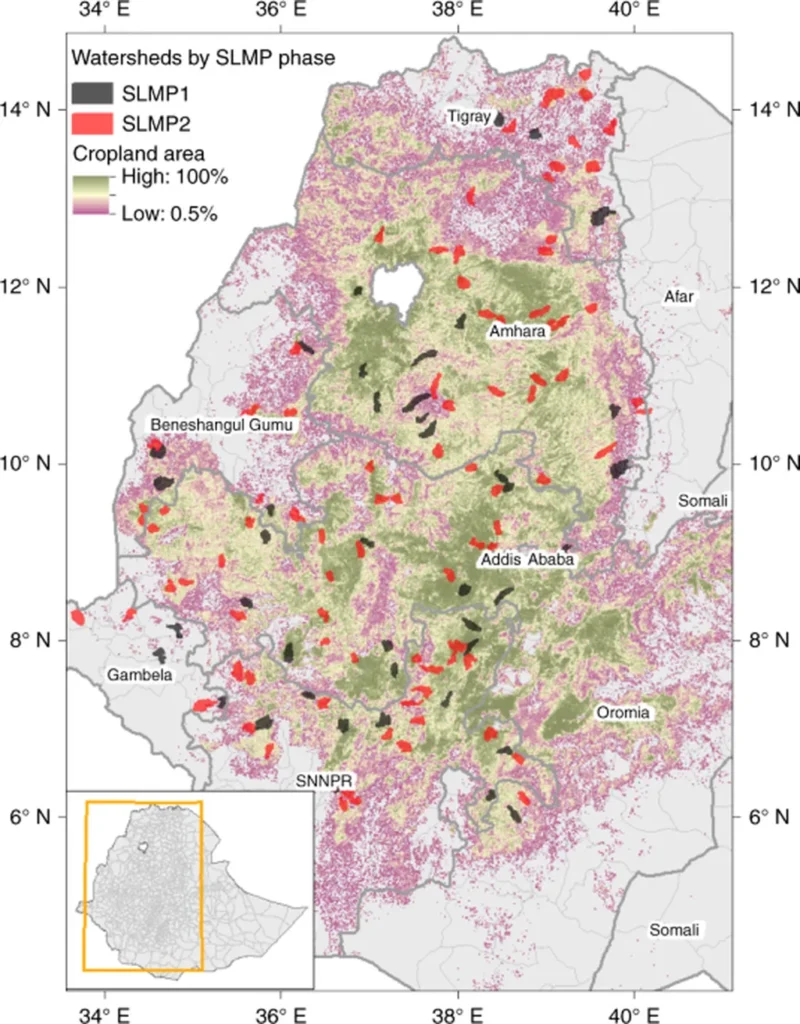In the heart of Ethiopia’s Amhara Region, the East Gojjam Zone has long been a breadbasket, its fertile lands sustaining both local communities and the broader economy. Yet, the specter of agricultural drought looms large, threatening crop yields and food security. A recent study published in the *Journal of Hydrology: Regional Studies* offers a nuanced look at the region’s drought dynamics, providing insights that could reshape agricultural practices and policy.
The research, led by Walelgn Dilnesa Cherie of Debre Markos University’s Hydraulic and Water Resources Engineering department, employs a sophisticated blend of remote sensing indices and machine learning models to dissect the spatiotemporal patterns of agricultural drought from 2013 to 2024. By integrating data on soil moisture, drought indices, and rainfall, the study paints a detailed picture of how drought impacts vegetation health and crop productivity.
“Our findings reveal significant interannual variability in drought intensity, with 2022 standing out as a particularly critical year,” Cherie explains. “This year saw widespread hydrological stress and reduced crop vigor, underscoring the urgent need for targeted mitigation strategies.”
The study’s innovative approach combines remote sensing indices like the Standardized Precipitation Evapotranspiration Index (SPEI), Soil Water Deficit Index (SWDI), and Normalized Difference Vegetation Index (NDVI_Max) with machine learning models, including Random Forest and multiple linear regression. This integration allowed the researchers to identify dominant predictors of vegetation health and assess their relationship with crop productivity.
One of the study’s most striking findings is the spatial heterogeneity of drought impacts. “Drought doesn’t affect all areas equally,” Cherie notes. “Our analysis highlights the need for woreda-specific— or district-specific—mitigation strategies. A one-size-fits-all approach simply won’t cut it.”
So, what does this mean for the agriculture sector? The study’s insights could have significant commercial implications. By identifying the most influential predictors of vegetation response—such as SWDI and NDVI_Max—farmers and agronomists can make more informed decisions about irrigation, crop selection, and resource allocation. Precision agriculture, already a growing trend, could see a boost, with farmers leveraging satellite data and machine learning models to optimize yields and mitigate drought impacts.
The study also underscores the importance of early warning systems. By providing timely, accurate information about drought conditions, these systems can help farmers and policymakers take proactive measures to protect crops and livelihoods. This could be particularly valuable in regions like East Gojjam, where agriculture is a cornerstone of the economy.
Looking ahead, the research offers a replicable, data-driven framework for drought risk assessment and adaptive agricultural planning. As climate change continues to exacerbate drought conditions, such frameworks will be invaluable for farmers, policymakers, and researchers alike. By embracing these insights, the agriculture sector can become more resilient, sustainable, and productive in the face of an uncertain climate future.
In an era where data is king, this study serves as a powerful reminder of the transformative potential of integrating remote sensing, machine learning, and local knowledge. As Cherie puts it, “The future of agriculture lies in our ability to adapt—to harness the power of data and technology to build resilience and ensure food security for all.”

